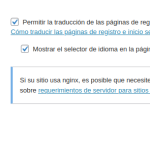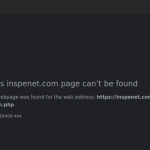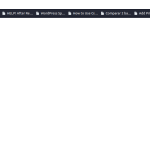This thread is resolved. Here is a description of the problem and solution.
Problem:
After updating the server to Nginx, the translated login page shows a 404 error. This issue arises because Nginx does not use the .htaccess file, which typically contains rules for handling translated pages.
Solution:
To resolve this, you need to add specific rewrite rules to your Nginx configuration. Here are the steps:
1. Open your Nginx configuration file.
2. Add the following rewrite rules:
rewrite ^/xx/wp-login.php /wp-login.php break;
Replace 'xx' with the language code. For instance, if your site supports English, German, and French, you should add:
rewrite ^/en/wp-login.php /wp-login.php break; rewrite ^/de/wp-login.php /wp-login.php break; rewrite ^/fr/wp-login.php /wp-login.php break;
3. Save the changes and restart Nginx.
If you do not have the permissions to modify the Nginx configuration, please contact your hosting provider.
If this solution does not apply to your situation, or if it seems outdated, we recommend checking the related known issues at https://wpml.org/known-issues/, verifying the version of the permanent fix, and confirming that you have installed the latest versions of themes and plugins. If issues persist, please open a new support ticket at WPML support forum.
This is the technical support forum for WPML - the multilingual WordPress plugin.
Everyone can read, but only WPML clients can post here. WPML team is replying on the forum 6 days per week, 22 hours per day.
This topic contains 3 replies, has 2 voices.
Last updated by 1 year, 1 month ago.
Assisted by: Nicolas V..



